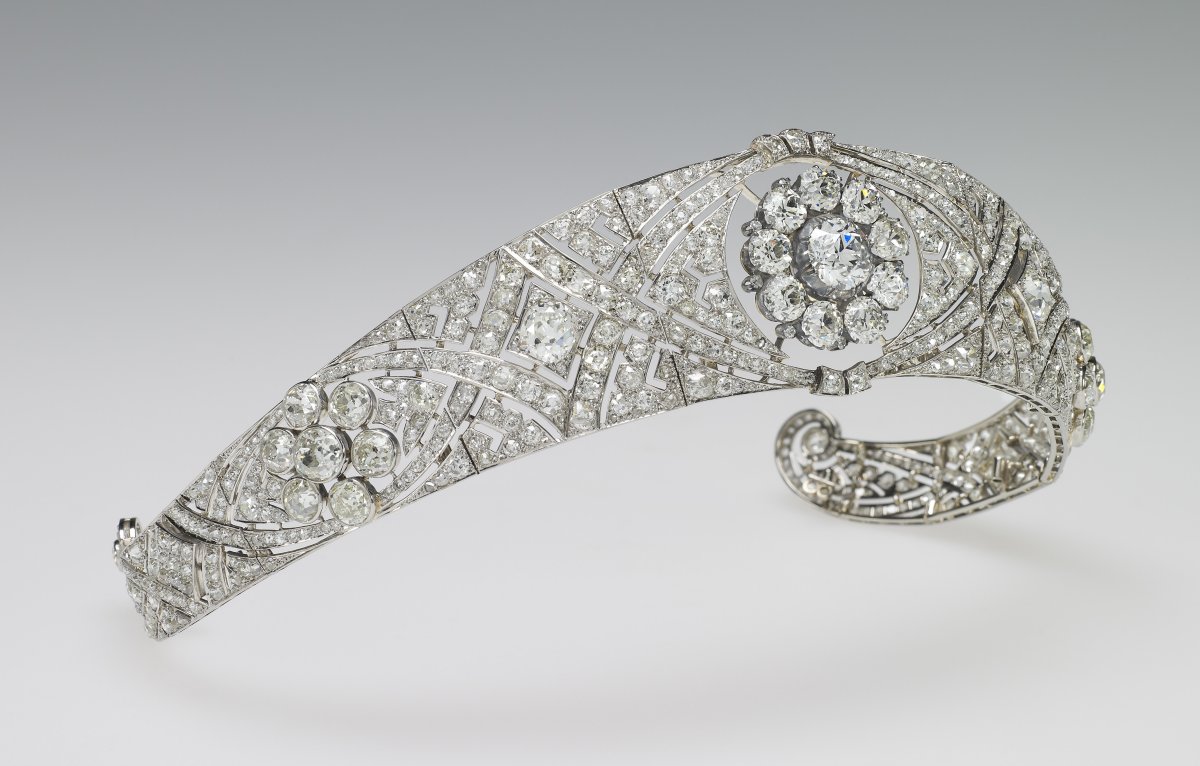
All month, we’ve been celebrating the tiara collection of the Queen’s grandmother, Mary of Teck. Today, we’re marking the anniversary of the most recent wearing of one of her more modern sparklers, the Diamond Bandeau.
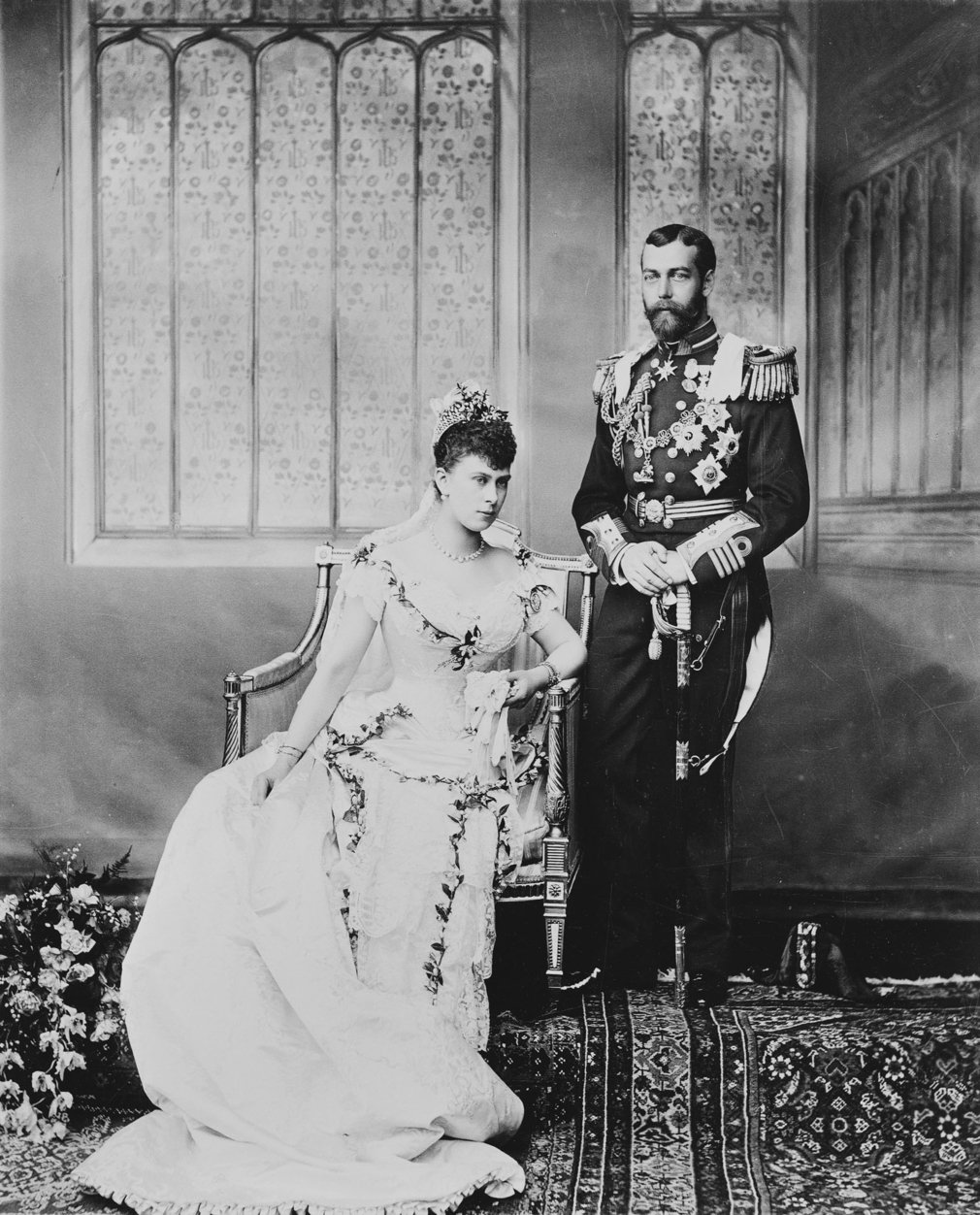
The bandeau has its roots in Queen Mary’s wedding gift collection. Princess Victoria Mary of Teck, as she was then, received a spectacular group of jewels as wedding presents when she married Prince George, Duke of York in July 1893. The couple became King George V and Queen Mary in 1910.
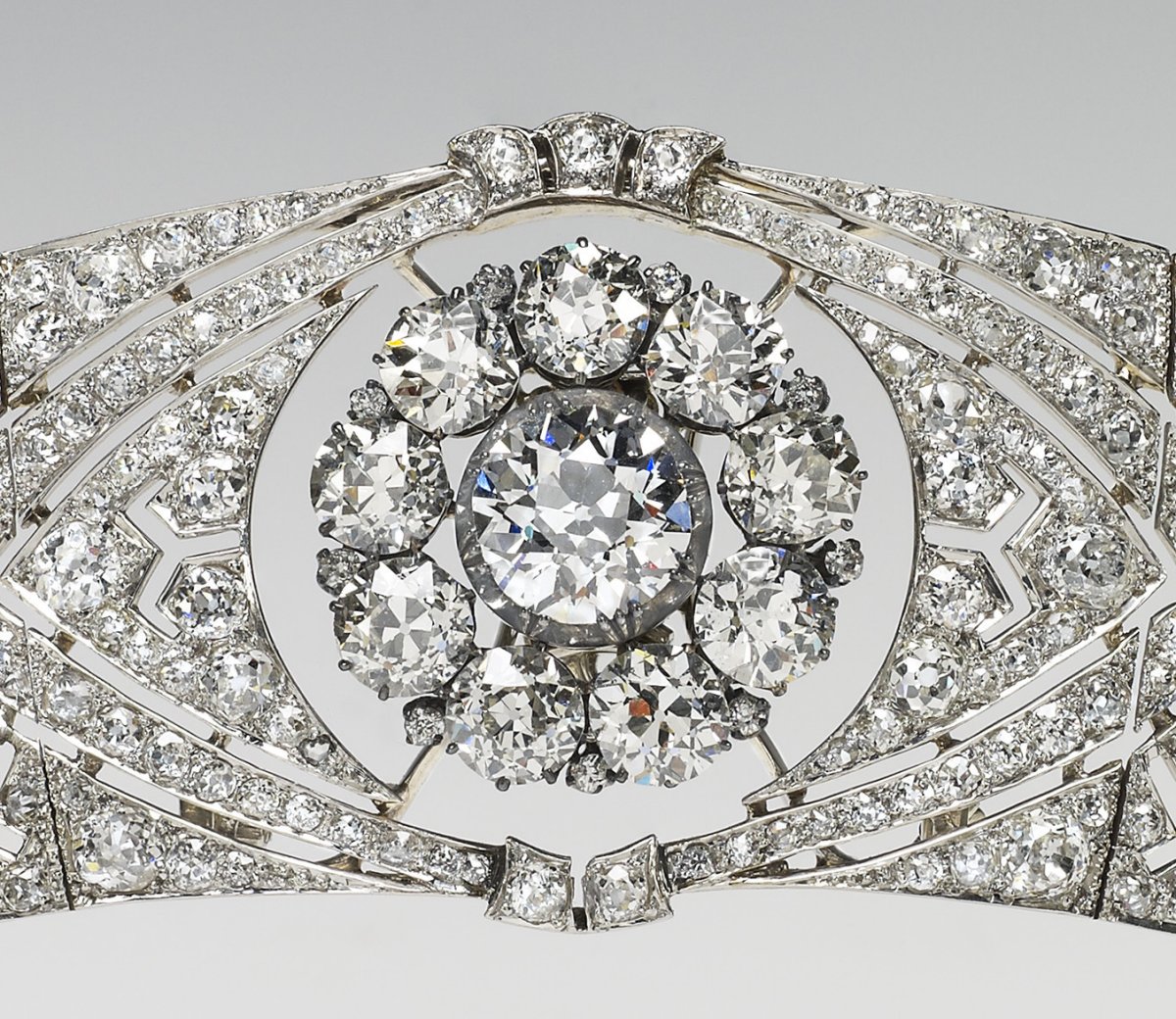
One of the glittering presents offered to Mary was a petite diamond cluster brooch. The jewel was a gift from the people of Lincolnshire. In June 1893, the Lincolnshire Chronicle carried an item on behalf of the Earl of Brownlow, who was the Lord Lieutenant of Lincolnshire (and a courtier, serving as a volunteer aide-de-camp to Queen Victoria). Lord Brownlow wrote to request “the co-operation of the Noblemen, Clergy, Gentry, and other Inhabitants of the County for the purpose of raising and offering a suitable present” for the upcoming royal wedding.
On July 5, 1893, the day before the royal wedding, Lord and Lady Brownlow traveled to Buckingham Palace to present the county’s gift to Princess Mary. The Chronicle wrote that the couple presented “on behalf of the county of Lincoln, the county wedding gift, consisting of a large diamond, surrounded by other fine diamonds. The jewel was enclosed in a case of ‘Lincoln green,” with the arms of the county, and quotation from the late Lord Tennyson, the great Lincolnshire poet, ‘God bless ’em. Marriages are made in Heaven.'”
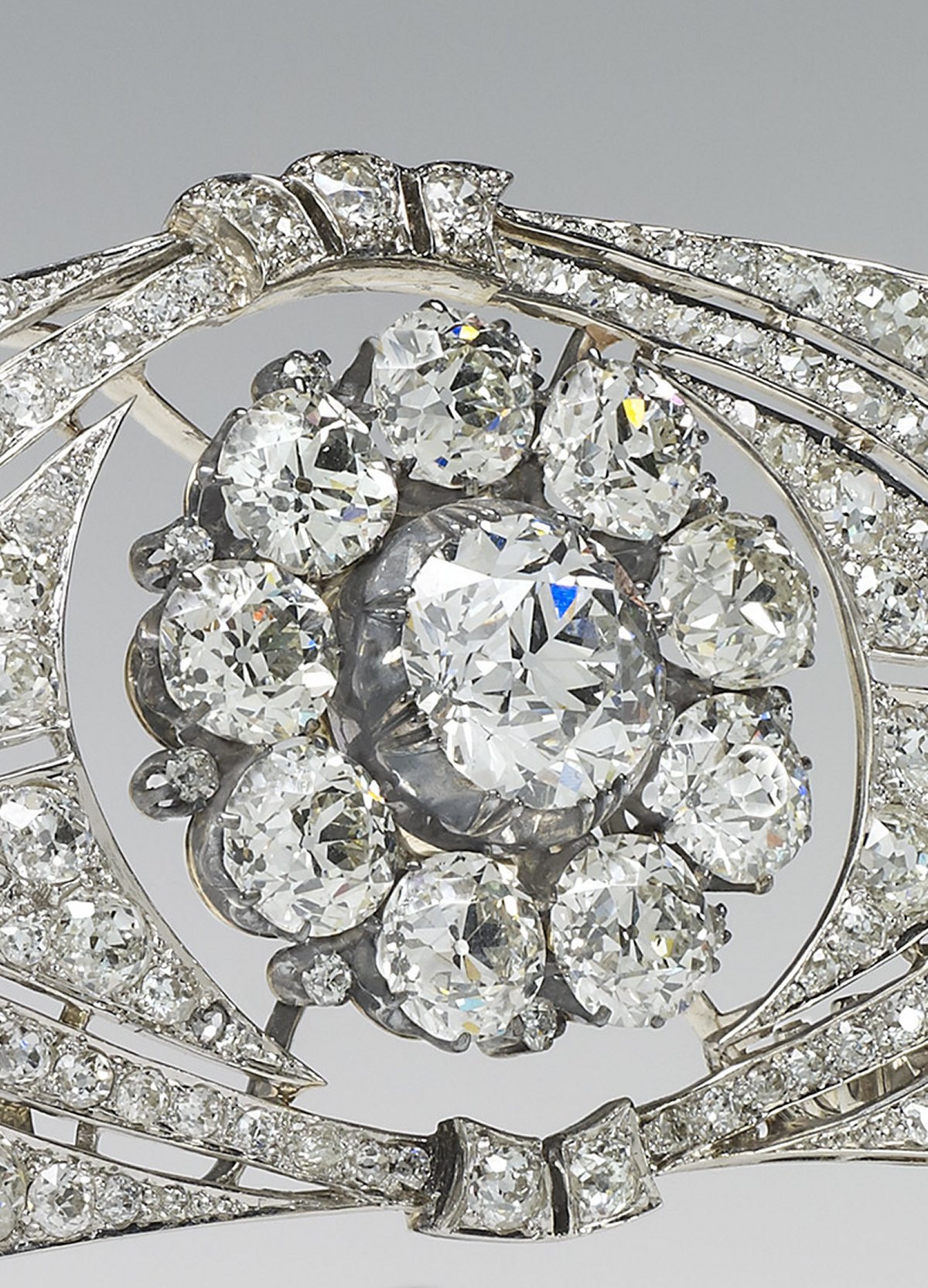
The small but mighty diamond cluster brooch featured nine brilliants twinkling in a cluster, surrounding a large collet-set diamond. Additional smaller stones were placed between the nine clustered stones. “The gift was most graciously received and greatly admired by Her Serene Highness, who expressed her warm appreciation of the kind and loyal feeling which prompted the gift,” the Chronicle added. The Pall Mall Gazette noted that Mary’s parents, the Duke and Duchess of Teck, were at her side for the gift presentation.
The County of Lincoln Brooch, as it was called in the lists of Mary’s wedding gifts, was displayed alongside the other presents for viewing by the public. A few weeks after the wedding, the Lincolnshire Chronicle published a full list of the names of those who had subscribed to (i.e., contributed money toward) the purchase of the brooch. Several businesses are listed in the roster, as well as several additional aristocrats (the Marquess of Exeter, the Earl of Ancaster, the Earl of Lindsey, the Earl and Countess of Yarborough, and the Dowager Countess of Yarborough).
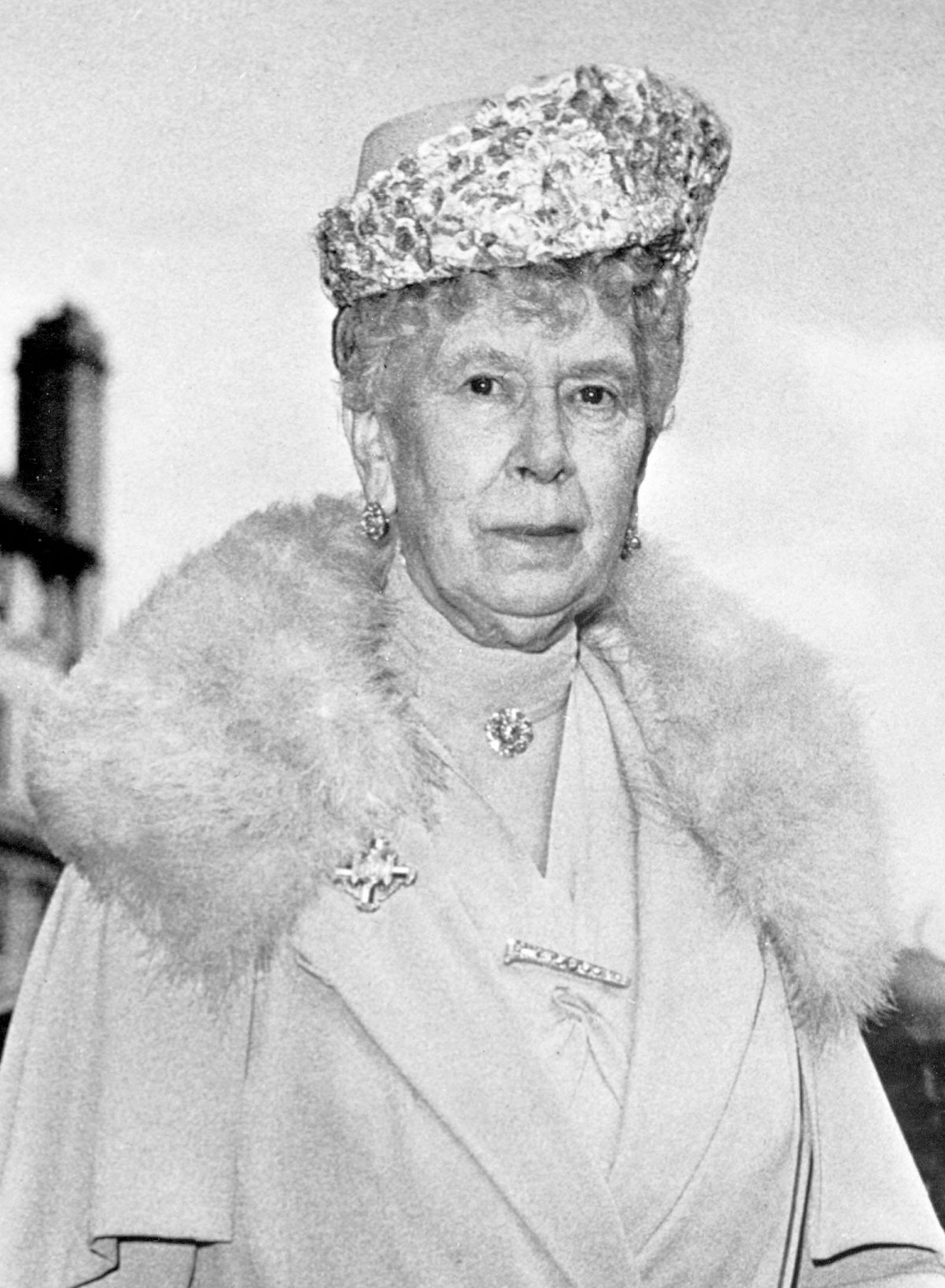
The County of Lincoln Brooch is one of the clusters that Queen Mary often pinned at her throat. Above, you’ll spot the brooch in that position in a portrait taken in the 1950s.
And you’ll also spot the brooch placed in the same position in this image, taken when Queen Mary and Queen Elizabeth (the Queen Mother) attended an exhibition at the Royal Academy in London in May 1950.
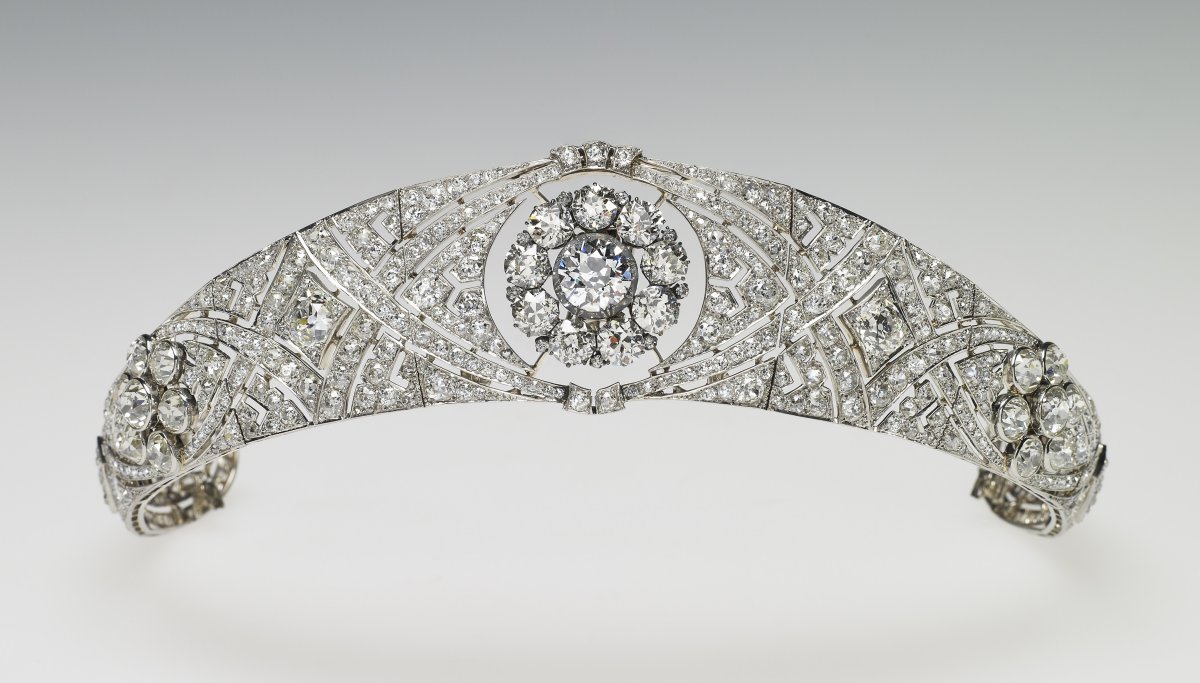
By that point, though, Queen Mary had already transformed the brooch into something more versatile. In 1932, she had commissioned Garrard to make a new diamond and platinum bandeau-style tiara, using the County of Lincoln Brooch as its centerpiece. The Royal Collection notes that “the tiara is formed as a flexible band of eleven sections, pavé set with large and small brilliant diamonds in a geometric design.”

The cluster style of the County of Lincoln Brooch is echoed in a set of smaller diamond clusters placed on either side of the tiara. The central brooch is detachable, and Mary continued to wear it both as part of the tiara and as a standalone jewel in the years after the tiara was made.
In June 1951, Queen Mary wore the diamond bandeau tiara for the premiere of the film The Lavender Hill Mob at the Odeon near the Marble Arch in London. She was escorted at the event by Field Marshal Bernard Montgomery, by then the 1st Viscount Montgomery of Alamein.
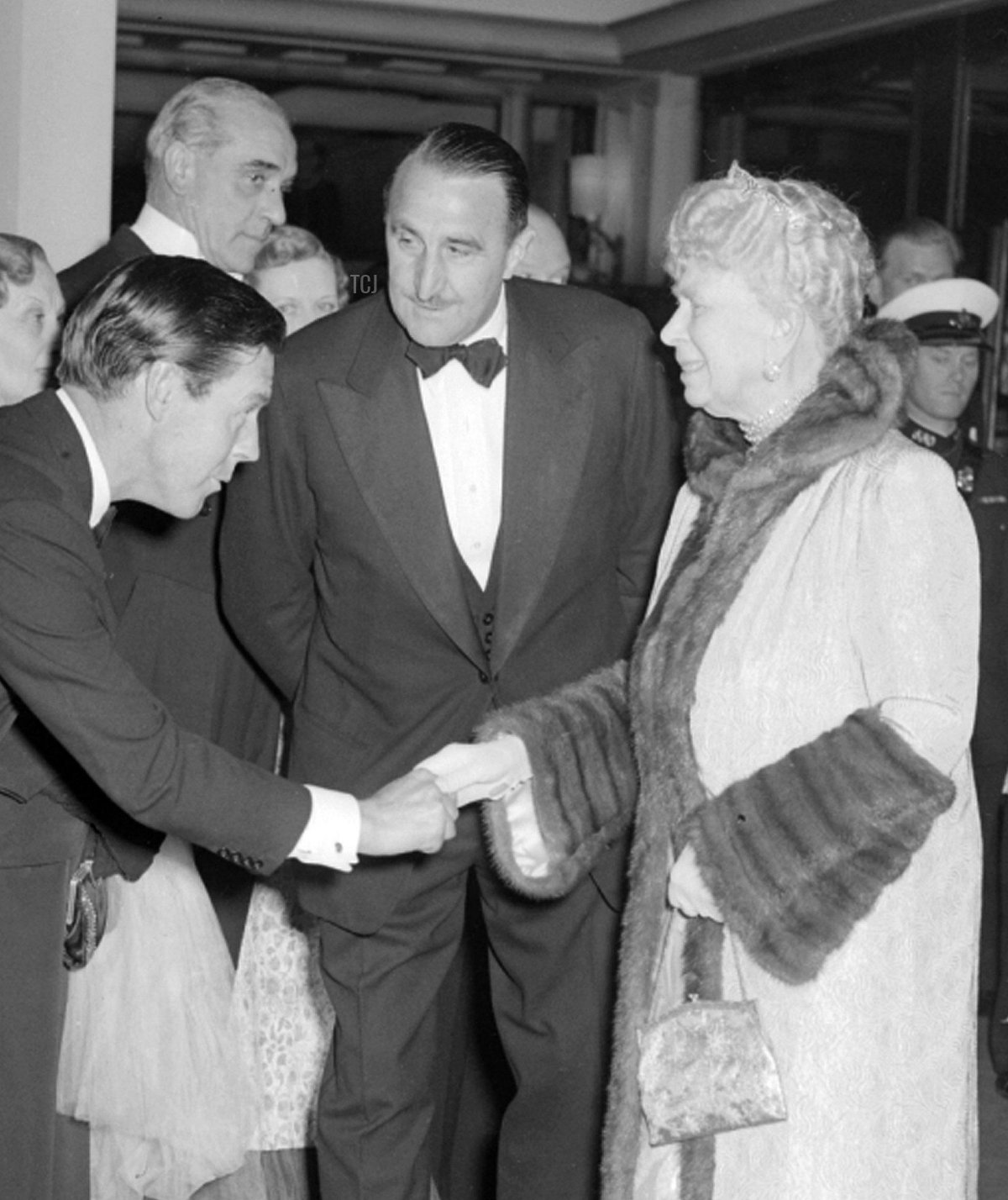
And here, she greets the director of the comedy film, Charles Crichton, at the premiere. The event was one of Queen Mary’s final appearances in the tiara. She died in March 1953, less than two years later, and bequeathed the tiara to her granddaughter, Queen Elizabeth II.
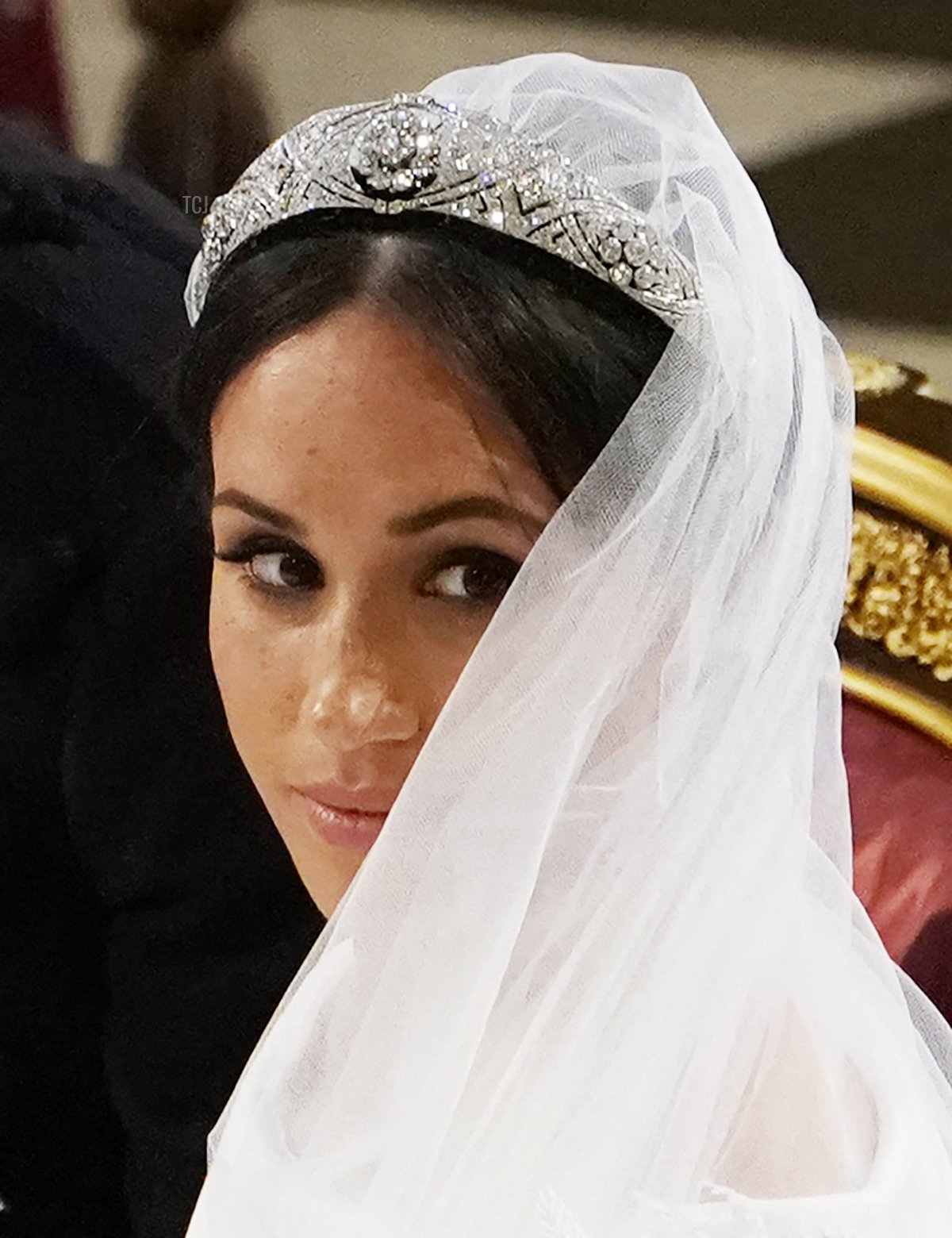
The tiara remained in the royal vaults for a remarkable 65 years after the Queen inherited the jewel. But on May 19, 2018, it was seen once again on a member of the royal family. The new Duchess of Sussex wore the tiara for her royal wedding at St. George’s Chapel, Windsor.
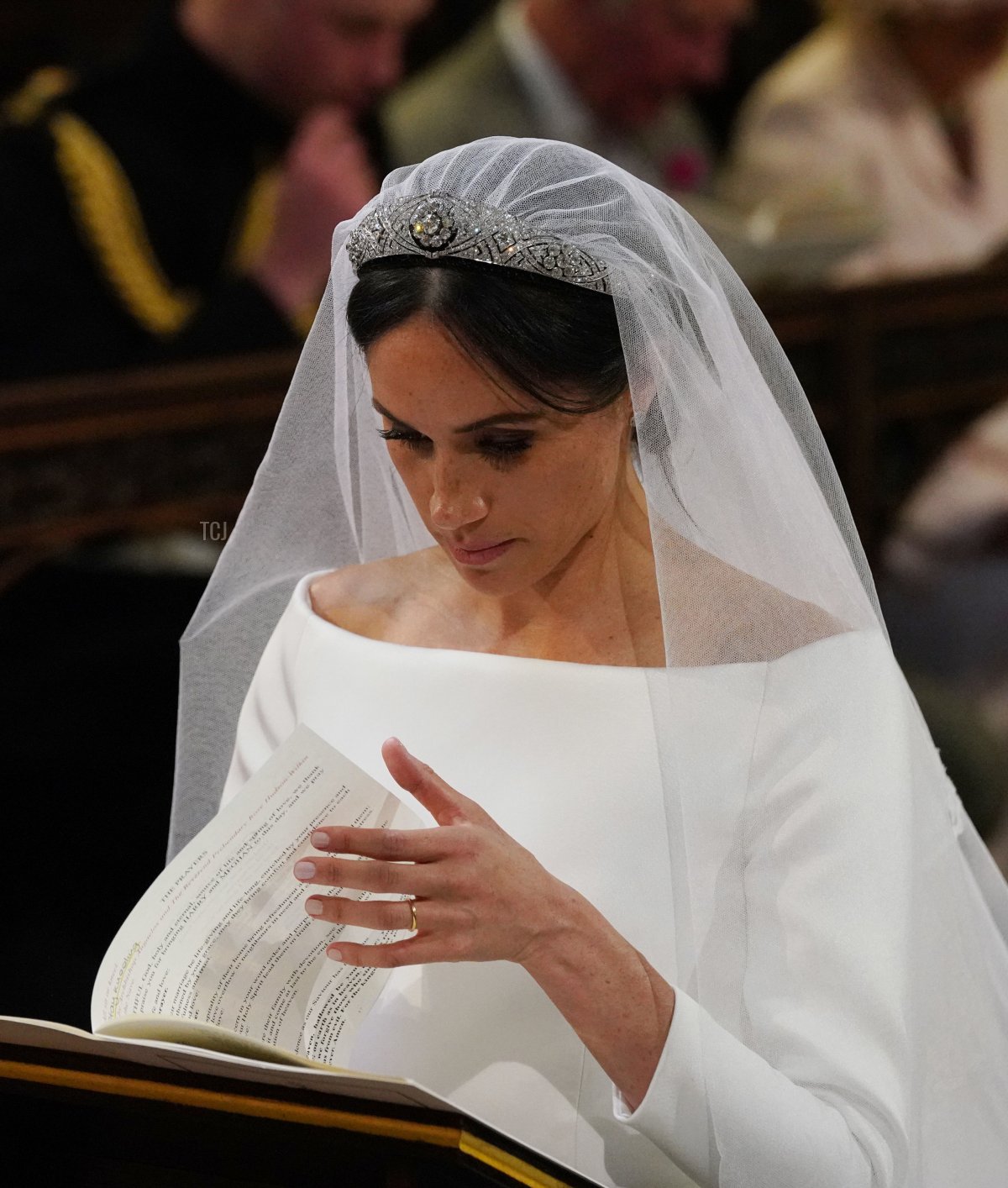
Here’s another look at Meghan wearing the tiara on her wedding day. Lots and lots and lots of words have been written about the Duchess’s wedding tiara decision over the past several years. I covered the story as objectively as I felt I could in a previous article, and I’ll request that we leave that topic at rest and simply discuss the tiara itself in the comment section of this post.
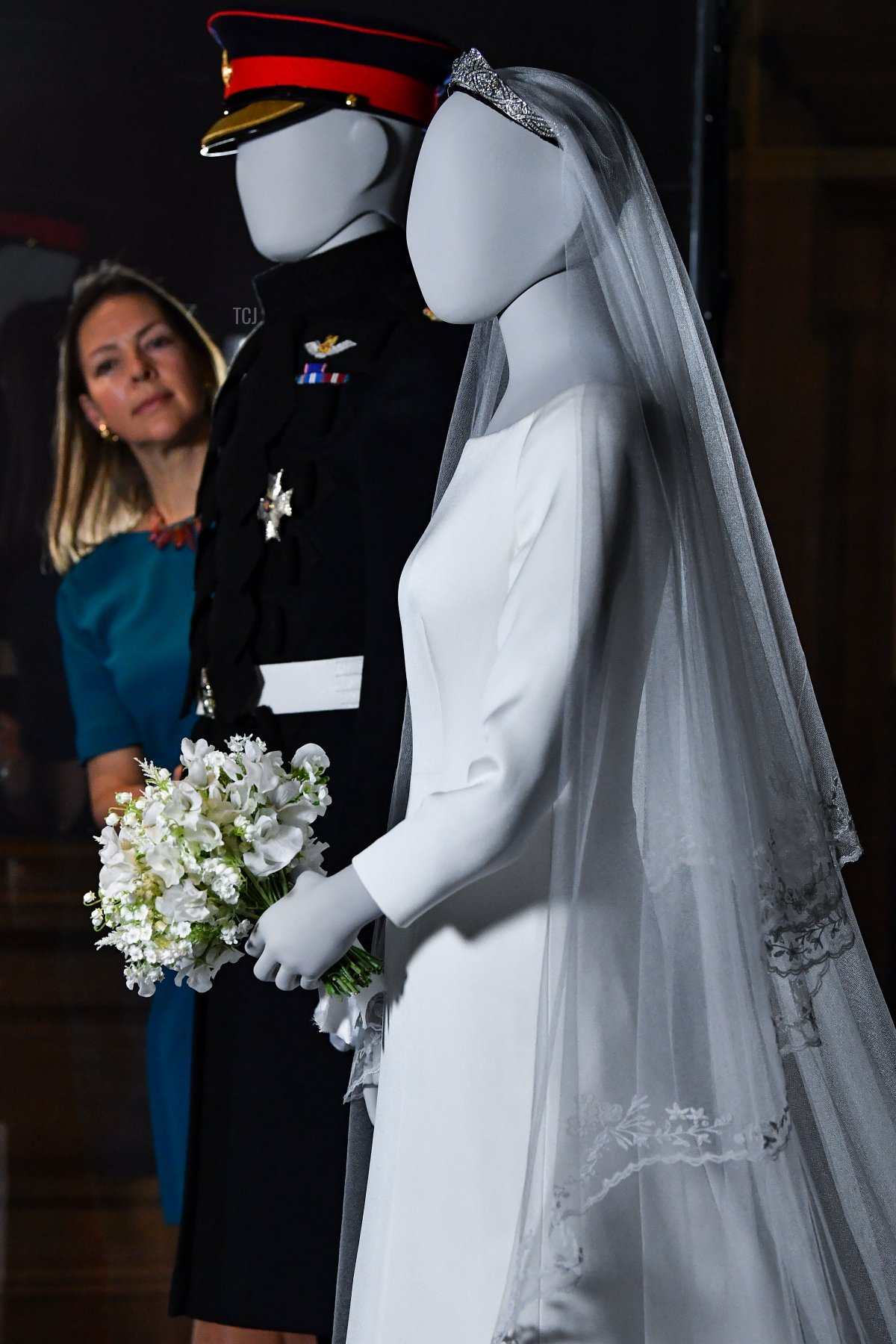
We most recently saw the tiara in public during the exhibitions of the Duke and Duchess of Sussex’s wedding clothes, first at Windsor Castle and then at the Palace of Holyroodhouse in Edinburgh. The latter exhibition closed in June 2019, and the bandeau has been back in the vaults since then.
Leave a Reply
You must be logged in to post a comment.